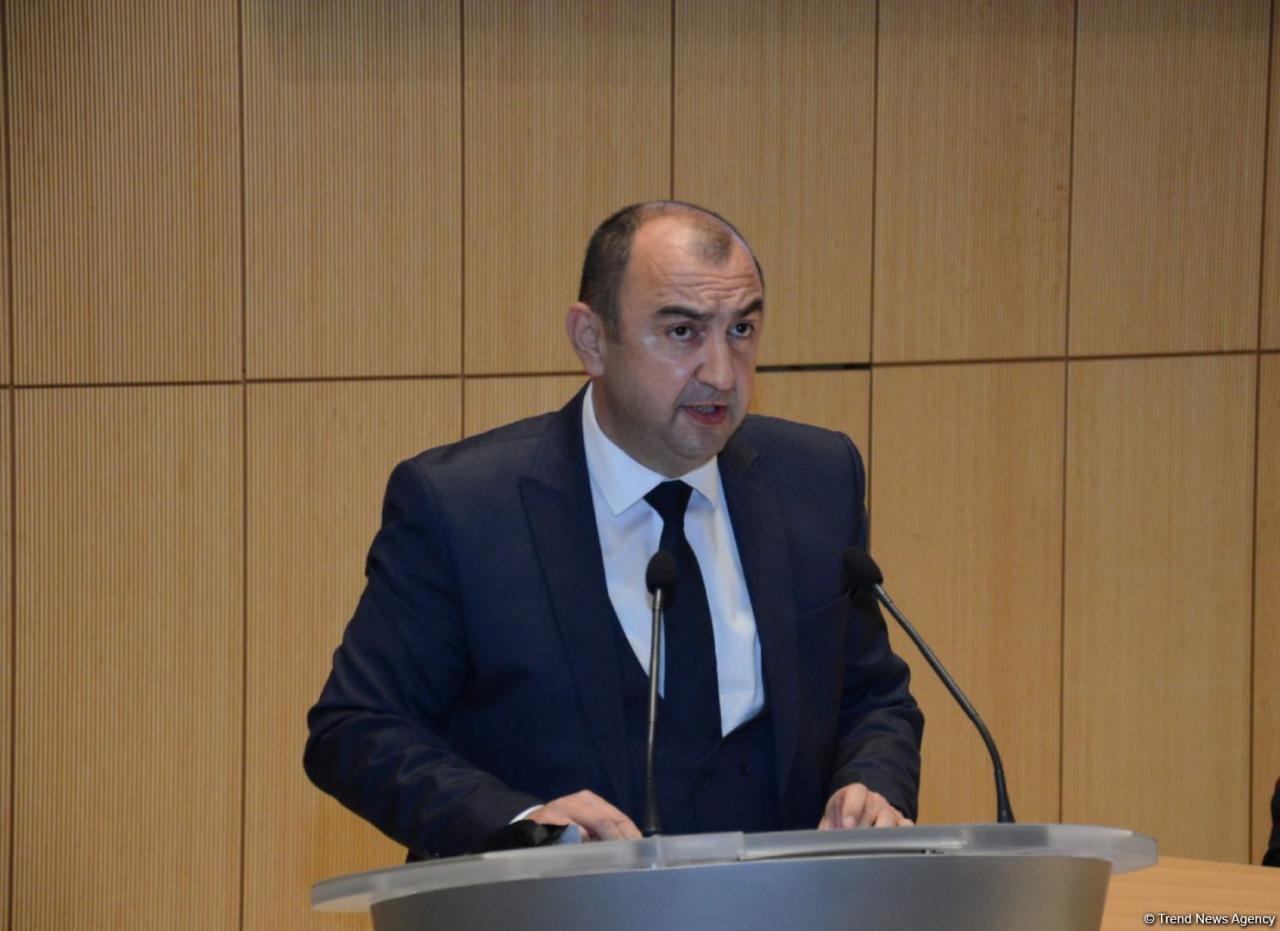Armenia deliberately damaged Azerbaijani ecosystem, biodiversity

By Ayya Lmahamad
Ecology and Natural Resources Deputy Minister Vugar Karimov has said that Armenians damaged Azerbaijan's nature, biodiversity and whole ecosystem, deliberately setting fire to 100 hectares of land during their three-decade occupation of Azerbaijani territories.
Karimov made the remarks at an event on “the state of the environment and natural resources in the East Zangazur and Karabakh economic regions”.
The deputy minister noted that out of 230,000 hectares of forest that existed in East Zangazur and Karabakh before the occupation, 54,000 hectares, that is 25 percent, had been destroyed.
“As a result of the exploitation of nature, an ecological imbalance emerged. Mass deforestation has led to desertification and destruction of forest ecosystems, flora and fauna species,” he added.
Moreover, Karimov stated that before the occupation over 200 species of plants were found on these territories, which amounted to more than 42 percent of the Azerbaijani flora.
“During the 2020 Karabakh war, rockets containing white phosphorous were used on the territory around Shusha city. As a result, the ecosystem was severely damaged,” he underlined.
Karimov added that 20 plant species found in the area are endemic species, and 127 species of fauna are included in the Red Book.
The deputy minister stressed that Azerbaijan's natural monuments destroyed by Armenia in the previously occupied territories cannot be restored.
He stated that, during the occupation, plane trees were destroyed in most of the territory of the Basitchay State Reserve. Karimov added that the serious damage was caused to the ecology of the Garagol State Natural Reserve.
“During the occupation, the water from Garagol Lake was intensively used for economic and other purposes. This led to a lowering of its level and a sharp decrease in its bioresources. During the studies, it was found that the population of golden trout was almost completely destroyed,” Karimov said.
The deputy minister stated that in 1982, some 152 trees ranging in age from 120 to 2,000 years, six especially valuable forest areas and six geological and paleontological sites in the region were given the status of a natural monument and were taken under state protection.
“However, during the occupation, 131 ancient trees were cut down and burnt. In addition, 288 hectares of forests, in which unique plane trees grew, were completely destroyed,” he added.
Furthermore, he added that Azerbaijan’s mineral resources were plundered as well during the Armenian occupation of Azerbaijani lands.
He stated that during the occupation, 52 deposits of gold, silver, copper, mercury, various building materials, groundwater and thermal mineral waters were exploited and plundered.
The deputy minister noted that Eastern Zangazur and Karabakh region are particularly rich in water resources. He added that there are 14 main rivers, nine water reservoirs, seven lakes and natural mineral springs of ecological significance in these territories.
“As a result of the fact that the four main transboundary rivers between Azerbaijan and Armenia- the Araz, Basitchay, Bargushadchay and Okhchuchay- remained outside the environmental control, it has been impossible to obtain accurate information about the condition of these basins for a long time,” he said.
Karimov stressed that the results of monitoring have shown that these rivers are extremely heavily polluted with heavy metals.
Likewise, he stressed that the Zangazur copper-molybdenum and Kafan copper-ore plants on the Armenian territory pollute the Okhchuchay river with untreated production waters, as well as with sewage formed in those plants.
The deputy minister underlined that the riverbed has turned into an ecological disaster zone, adding that excessive pollution of the Okhchuchay river has led to the mass destruction of fauna species.
“In addition, during the occupation, the Sarsang reservoir was not maintained, which turned it into a source of potential danger for 40,000 people living in the nearby areas. In winter, water from this reservoir flooded settlements, agricultural areas, communication lines, while in summer there was practically no water supply, so there was a shortage of water and serious problems for irrigation of crops,” Karimov added.
As a result of ecological terror carried out by Armenia through the use of banned chemical weapons and deliberate mass fires, the environment in the Karabakh region of Azerbaijan, including freshwater sources, has been physically and chemically polluted, various rare plant and animal species were destroyed and the cessation of the process of self-regulation in rivers and lakes, which has turned the water basins into a dead zone, harmful to all living organisms.
A Moscow-brokered ceasefire deal that Baku and Yerevan signed on November 10, 2020, brought an end to six weeks of fighting between Armenia and Azerbaijan. The Azerbaijani army declared a victory against the Armenian troops. The signed agreement obliged Armenia to withdraw its troops from the Azerbaijani lands that it has occupied since the early 1990s.
The peace agreement stipulated the return of Azerbaijan's Armenian-occupied Kalbajar, Aghdam and Lachin regions and withdraw its troops from the Azerbaijani lands that it has occupied since the early 1990s. Before the signing of the deal, the Azerbaijani army had liberated around 300 villages, settlements, city centers, and historic Shusha city.
--
Ayya Lmahamad is AzerNews’ staff journalist, follow her on Twitter: @AyyaLmahamad
Follow us on Twitter @AzerNewsAz
Here we are to serve you with news right now. It does not cost much, but worth your attention.
Choose to support open, independent, quality journalism and subscribe on a monthly basis.
By subscribing to our online newspaper, you can have full digital access to all news, analysis, and much more.
You can also follow AzerNEWS on Twitter @AzerNewsAz or Facebook @AzerNewsNewspaper
Thank you!
